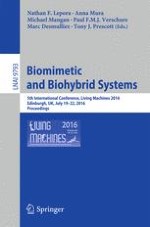2016 | OriginalPaper | Chapter
Navigate the Unknown: Implications of Grid-Cells “Mental Travel” in Vicarious Trial and Error
Authors : Diogo Santos-Pata, Riccardo Zucca, Paul F. M. J. Verschure
Published in: Biomimetic and Biohybrid Systems
Publisher: Springer International Publishing
Activate our intelligent search to find suitable subject content or patents.
Select sections of text to find matching patents with Artificial Intelligence. powered by
Select sections of text to find additional relevant content using AI-assisted search. powered by
